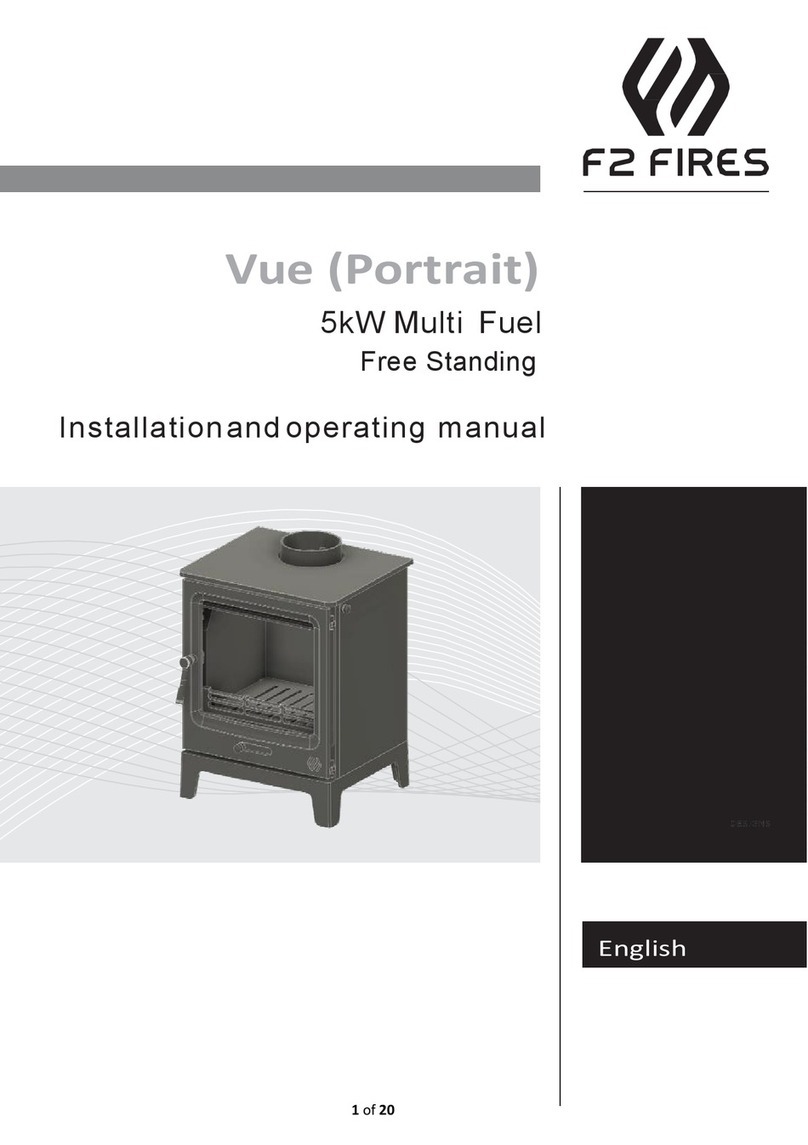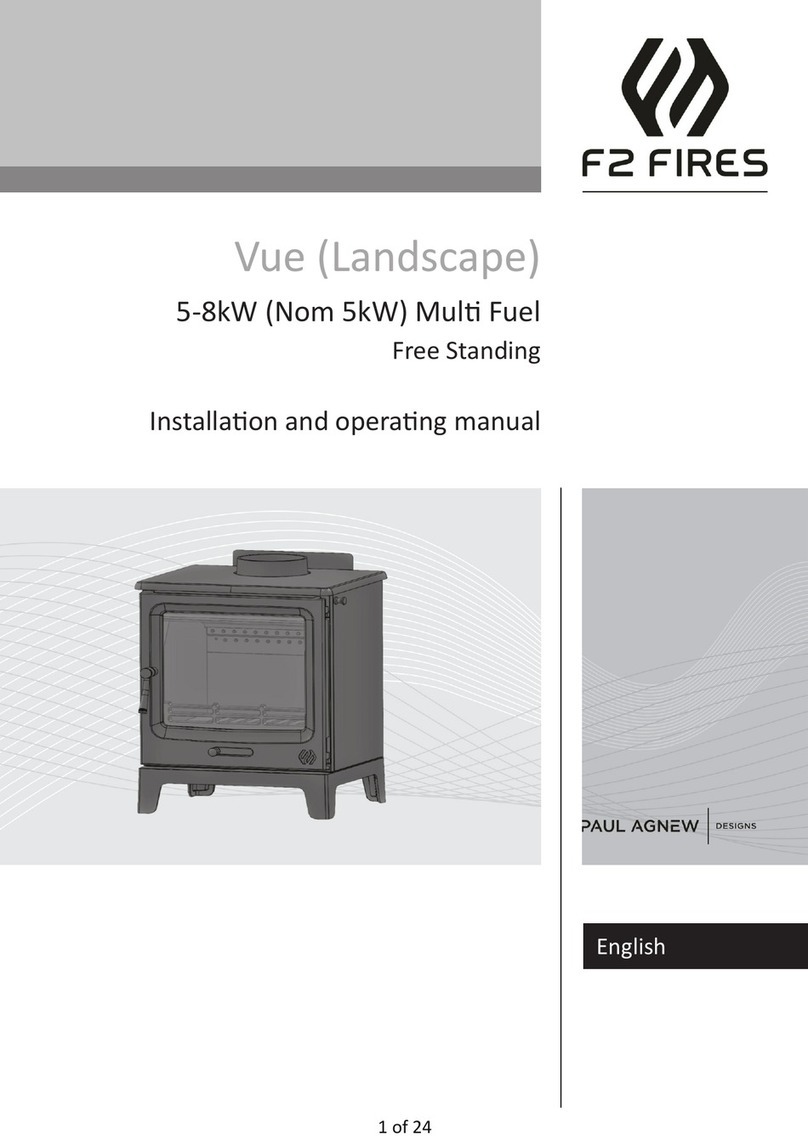
First stage
The fire is usually smokiest just after lighting due to the coldness of the wood and appliance, which can take heat
away from the flames. During this stage, ensure that the air inlet is fully open to increase the flame
temperature and initial heat. Heat will escape straight into the flue system, however, this is a necessary part of
starting an
efficient fire.
Initial heat
The additional heat at the first stage will prime the chimney, producing a strong draft. It will also help to keep
the chimney or flue clean by loosening anything deposited during a previous fire. The hot initial burn also drives
moisture from the firewood and gives an ignition source for the smoke that is released from the wood.
Adding fuel
When adding fuel, only make small, gradual changes. Do not add too much fuel at once. Adding fuel gradually
will help to maintain a steady optimum temperature and burning rate so that the appliance burns efficiently
and cleanly.
Adding too much fuel will also dramatically reduce the temperature inside the firebox. After adding large
pieces of fuel, it is recommended that you increase the air opening slightly, so that the new fuel begins to burn
and the appliance returns to optimum operational temperature. This also applies to the air control. Adjusting it
gradually will help maintain a steady combustion rate. In most instances, you will arrive at the best combustion
air settings yourself as the height and diameter of the chimney, as well as the quality of the firewood are
decisive factors in determining your appliance’s efficiency.
Small hot fires are more efficient than large slumbering ones. Most of the energy in burning wood is released
as a bright flame. The turbulence in the flames creates good mixing between the combustion air and the gases
that are released from the wood as it heats up. The heat of the fire ignites and burns these gases. In contrast, the
dense smoke from a slow, smoldering fire is potential heat energy that can escape up the chimney and either
cling to the chimney flue or pollute the atmosphere.
To gain the most heat from each burn, the fuel should be flaming throughout the burn cycle until it is reduced
to ash. Should any regular slow-burning occur, it is always good practice to burn a hot fire at regular intervals to
keep the chimney clean and dry. When refueling, always place the fuel towards the back of the appliance where
it will burn at a higher temperature.
Types of fuel
Wood needs to be well seasoned before it is burnt. For the best performance, you should use kiln dried wood or
seasoned wood with no more than 20% moisture content. As a general guide, wood should be cut to length,
split and then stacked under cover outside with sides open to the air, for at least 12 months. You can tell that wood
is ready for burning when radial cracks appear at the end of the logs. It is then good practice to store the wood in a
log basket inside your property for a few days prior to its use. The internal width of the firebox of the Ellipse is
330mm, therefore firewood should be no longer than this.
DO NOT burn unseasoned wood in your appliance. DO NOT burn particle board, lacquered, painted or treated
wood, plastics, rubber or liquid fuels. Should the appliance burn any of these materials, the warranty will
become void. This appliance should not be used as an incinerator.
9
How to light and sustain a fire





























